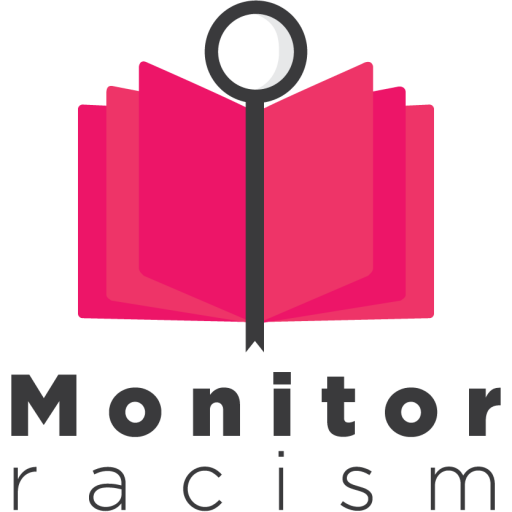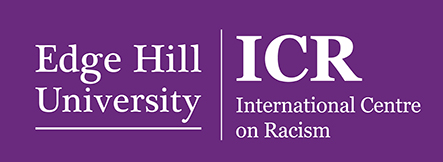Social Media & Antisemitism: New Data & Recommendations.[1]
Despite numerous initiatives by governments and IT companies over the last few years, online antisemitism remains a major policy challenge. In fact, the problem is intensifying. The expression of hatred against Jews does not sit still: antisemitic ideas are expressed in new ways, using new forms of language and new platforms. This dynamism is not surprising to historians; it follows a pattern that has been witnessed over millennia.[2] Indeed, it is only by extending the timespan of our analysis of antisemitism, or indeed any racism, that we can establish trends that lie behind this apparent flux. This is the case not just for research about antisemitism, but also how it can be fought effectively: anti-antisemitism. The role played by the online space in the antisemitic murders in Germany and the United States has underlined the compelling significance of this task.

[Professor Stefanie Schuler-Springorum, director of the ZfA]
In response, MONITOR magazine co-organised a high-level international meeting of scholars who have expertise in innovations in media and antisemitism across the broad sweep of history, from medieval Europe to the dark web. Our partners were the Zentrum für Antisemitismusforschung at the Technische Universität Berlin, and the International Centre on Racism at Edge Hill University, UK. The conference was funded by the European Association for Jewish Studies. The recommendations that follow are based on the new data and approaches presented and discussed at the meeting.
MONITOR RECOMMENDATIONS
- Develop strategies and tools to disrupt emotional satisfaction.
- Disrupt discussion groups (move away from an exclusive focus on individual offences, but look to their online and off-line networks that cultivate them).
- Accelerate de-platforming.
- Coordinate and increase targeted civil society tracking and online response, using real-time news gathering.
The Joy of Jew-Hating
The emotions involved in antisemitism are a neglected area of research and public discussion. The intuitive response is that hate is a principal emotion that motivates verbal and physical attacks on Jews. We can also add fear: conspiracy theories about Jews wishing to control the world are identifiable from the 15th century in Iberia. The Inquisition’s pre-occupation with hidden Jews, and plots to kills Christians and pollute their blood, circulated in texts from southern Europe, and into the central Europe of the Reformation and Counter-Reformation.[3] In the late nineteenth century, the writer Leon Pinsker coined the term ‘Judeophobia’, as an alternative to ‘antisemitism’.[4] Certainly, fear and the conspiracy idea has remained central to antisemitism through to the present.[5] However, another critical emotion from early modernity behind antisemitic culture, missed in the literature, is joy—the fun of targeting Jews.[6] This is evident from the role played by antisemitism in European carnivals (still evident today)[7], comedic theatre, the antisemitic joke, and rituals of humiliation.
- This emotional component needs to be taken into account in online strategies. Methods are required that disrupt the satisfaction of participating in antisemitic online discussion, including the acts of reading, and sharing.
The Crowd and the Spectacle

[meeting participants]
Starting in late medieval history, the participation in the crowd of event spectacles was a central medium in the culture of antisemitism. In 15th century Iberia, a key spectacle was the Inquisition’s public display of heretics, their confessions, and punishment— the auto-da-fé. The significance of the crowd and the spectacle in antisemitism continued across the centuries. Today, the internet functions as the host of virtual crowds, who collectively participate in the spectacle of antisemitism.[8] This virtual crowd culture does not remain online, but seeps into off-line political participation. For example, in Poland, the online recruitment to far-right politics and participation in the crowd in football matches are intertwined; the sense of belonging to a crowd participating in the spectacle is critical.[9] On the dark web, we see far-right groups who coalesce around particular individuals and groupings, such as the US-based Atomwaffen Division network.[10]
- Each ‘lone-wolf’ belongs to, and participates in, an antisemitic online crowd of some form, which follows millenia of antisemitic practice. Hence, their felt need to broadcast their actions—not just to the wider world, but their perceived community.
- The virtual (and actual) crowd, rather than only individual online conduct, requires specific strategies and actions.
Targeted antiracist response
From the 1970s, antiracist organisations developed the strategy of ‘no platforming’, which is well known. Less known, however, was the strategy of intelligence gathering via media, and the targeted response by civil society organisations. The antiracist magazine Searchlight succeeded in collecting real-time data on far-right public activities across the UK, which was used to pin-point responses.[11] More recently, mass collective responses to antisemitic abuse and campaigns on Twitter has been shown to be effective in mitigating its spread and influence: such positive content is greater in volume, reach and impact.[12]
- Real-time intelligence gathering and sharing of antisemitic hotspots online would follow the successful record of Searchlight.
- Mass online responses against antisemitic upsurges have a positive effect in halting their spread and influence.
No/De-Platforming
From the dawn of the internet age, far-right activism, ideas, and slogans have been on a path to becoming mainstream.[13] A range of mass platforms have been core to this process, such as YouTube, which has accelerated at a tremendous rate in recent years. How to respond? The off-line practice of non-platforming remains a source of controversy. The effectiveness of its online equivalent— de-platforming— has been open to debate. Concerns have remained about whether it gives greater publicity to individuals, if it de-toxifies the platform, and whether the move to other channels just shifts the problem elsewhere. New data, however, suggests that the removal of prominent racists from big platforms succeeds in greatly reducing their revenue streams; diminishing the levels of racism on the platform; and reduces media visibility.[14] At the same time, any such measures need to address the bigger political context of any prominent individual.[15]
- Accelerate the de-platforming of antisemites from mainstream channels.
- Combine such measures with the other strategies proposed above: ‘crowd’ disruption; sharing of real-time online intelligence among civil society groups; digital interventions to undermine the enjoyment of antisemitic engagement.
Meeting Partners:
Meeting Funder:

[1] This policy paper is based on the findings of the event, ‘Antisemitism and Social Media: Deciphering the Past and Present Relationship Between Prejudice and Communication’, 5-6 November 2019: https://blogs.edgehill.ac.uk/icr/2019/10/08/social-media-and-antisemitism/ Specific contributions are cited below.
[2] Dr Lindsay Kaplan, Georgetown University, ‘Creating Racial Hatred in Medieval Psalter Illuminations’; Dr Marcia Kupfer, Washington D.C., ‘From Codex to Carnival, Medium as Part of the Anti-Jewish Message’.
[3] Professor Stefanie Schüler-Springorum, Technische Universität Berlin, ‘Antisemitism and the Media: A Historical Overview.’
[4] Scott Ury, ‘Strange Bedfellows? Anti-Semitism, Zionism, and the Fate of “the Jews”’, American Historical Review, Volume 123, Issue 4, October 2018, p. 1153.
[5] Dr Martina L. Weisz, Vidal Sassoon International Center for the Study of Antisemitism, Hebrew University of Jerusalem. ‘Jewish Conspiracy and the Daily Press in Spain’; Dr Victoria Woeste, Indiana, ‘Fake News— From the Protocols to the Presidential Election of 2016’.
[6] Schüler-Springorum, ‘Antisemitism and the Media’.
[7] Kupfer, ‘Codex to Carnival’.
[8] Schüler-Springorum, ‘Antisemitism and the Media’.
[9] Professor Kitty Millet, San Francisco State University, ‘Social Media, Hate and Identification’.
[10] Dr Ariel Koch, Moshe Dayan Center for Middle Eastern Studies, Tel Aviv University, ‘Nazism, Satanism and Jihadism: Inside the Bizarre Online World of Atomwaffen Division’s Network of Hate and Rage’.
[11] Dr Patrick Soulsby, ICR, Edge Hill University, ‘A Resurrected Evil’: Challenging Antisemitism in Antiracist Media, c. 1980-2000’.
[12] Dr Sefa Ozalp, HateLab, Cardiff University, ‘Antisemitism on Twitter: Collective Efficacy and the Role of Community Organisations in Challenging Online Hate Speech’.
[13] Dr Matthias J. Becker, Haifa University & Technische Universität Berlin, ‘ “I voted Leave! So, why are you still here?” Antisemitic hate speech on British websites in the context of Brexit’; Dr Aaron Winter, ICR & University of East London, ‘Online Hate: From the Far-Right to the ‘Alt-Right’, and from the Margins to the Mainstream’.
[14] Professor Richard Rogers, University of Amsterdam, ‘Deplatforming: Following the Extremists to an Alternative Social Media Ecosystem’.
[15] Comment by Aaron Winter; Dr James Smith, Royal Holloway, University of London, ‘From Trope to Meme’.



